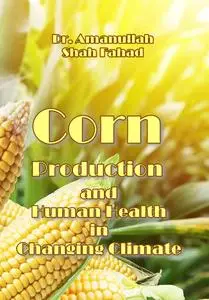"Corn: Production and Human Health in Changing Climate" ed. by Dr. Amanullah, Shah Fahad
ITexLi | 2018 | ISBN: 1789841569 9781789841565 1789841550 9781789841558 1838817670 9781838817671 | 133 pages | PDF | 7 MB
ITexLi | 2018 | ISBN: 1789841569 9781789841565 1789841550 9781789841558 1838817670 9781838817671 | 133 pages | PDF | 7 MB
This volume is dedicated to corn or maize (Zea mays L.) plays an important role in global food security.
The many uses of corn make it a central commodity and a great influence on prices. Because of its worldwide distribution and relatively lower price, corn has a wider range of uses. It is used directly for human consumption, in industrially processed foods, as livestock feed, and in industrial nonfood products such as starches, acids, and alcohols. Recently, there has been interest in using maize for the production of ethanol as a substitute for petroleum-based fuels. It is an important source of carbohydrate, protein, iron, vitamin B, and minerals. Climate change, however, is a growing concern among corn growers worldwide. Scientists estimate that corn production will need to be increased by 15% per unit area between 2017 and 2037. To increase corn yields, advanced and new production technology needs to be developed and distributed among corn growers. The advanced technology to boost corn yields and counteract climate change is important for food security for the growing global population. Nutritionally, maize seeds contain 60-68% starch and 7-15% protein. Maize oil is widely used as a cooking medium and for manufacturing hydrogenated oil. The oil has the quality of reducing cholesterol in the human blood similar to sunflower oil. Corn flour is used as a thickening agent in the preparation of many edibles such as soups, sauces, and custard powder. Integrated nutrients management improves corn growth, leaf area index and light interception, dry matter accumulation and distribution, grain and fodder quality, yield components, grain and biomass yields, harvest index, and shelling percentage, and reduces the problem of food insecurity.
Contents
1. Integrated Nutrient Management in Corn Production: Symbiosis for Food Security and Grower’s Income in Arid and Semiarid Climates
2. Corn Productivity: The Role of Management and Biotechnology
3. The Maize Contribution in the Human Health
4. Phytochemical Composition: Antioxidant Potential and Biological Activities of Corn
5. Bioactive Compounds in Pigmented Maize
6. Climate Change Impacts on Corn Phenology and Productivity
7. GIS-Based Assessment of Smallholder Farmers’ Perception of Climate Change Impacts and Their Adaptation Strategies for Maize Production in Anambra State, Nigeria
1st true PDF with TOC BookMarkLinks
More : You find here



